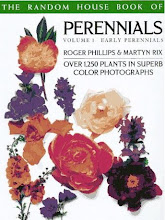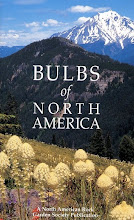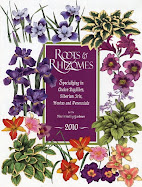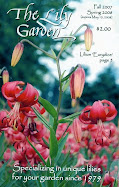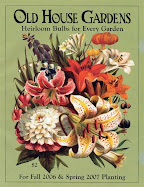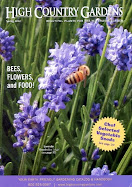Aquilegia formosa in Colman Park May 2010
Cornus canadensis at the Bellevue Botanical Garden March 2010
Spiraea douglasii in Discovery Park June 2010
Lysichiton americanum at the Bellevue Botanical Garden March 2010
Physocarpus capitatus in Carkeek Park June 2010
Rubus spectabilis in Madrona Park April 2010
Trillium ovatum in Madrona Park April 2010
The Washington Native Garden Plant List
Trees
Abies amabilis (Silver Fir) Abies grandis (Grand Fir): sun
Acer circinatum (Vine Maple) Acer macrophyllum (Bigleaf Maple): sun or shade
Alnus rubra (Red Alder): sun
Arbutus menziesii (Madrona): sun
Betula papyrifera (Paper Birch): sun
Chamaecyparis nootkatensis (Alaskan Cedar): sun
Crataegus douglasii (Black Hawthorne): sun
Picea sitchensis (Sitka Spruce): sun
Pinus contorta var. contorta (Shore Pine) Pinus monticola (Western White Pine) Pinus ponderosa (Ponderosa Pine): sun
Quercus garryana (Garry Oak): sun or shade
Pseudotsuga menziesii (Douglas Fir): sun
Taxus brevifolia (Western Yew): sun or shade
Thuja plicata (Western Red Cedar):sun or shade
Tsuga heterophylla (Western Hemlock): sun or shade
Shrubs
Amelanchier alnifolia (Serviceberry): sun
Arctostaphylos columbiana (Hairy Manzanita): sun
Ceanothus sanguineus (Buckbrush) Ceanothus velutinus (Snowbrush): sun
Gaultheria shallon (Salal): sun or shade
Holodiscus discolor (Oceanspray): sun or shade
Juniperus communis (Common Juniper): sun
Lonicera involucrata (Black Twinberry): sun or shade
Mahonia aquifolium (Oregon Grape) Mahonia nervosa, Mahonia repens: sun or shade
Oemleria cerasiformis (Indian Plum): shade
Philadelphus lewisii (Mock Orange): sun
Physocarpus capitatus (Ninebark): sun or shade
Rhododendron macrophyllum: shade
Ribes sanguineum (Flowering Currant): sun or shade
Rosa gymnocarpa (Baldhip Rose) Rosa nutkana (Nootka Rose): sun
Rubus parviflorus (Thimbleberry): sun Rubus spectabilis (Salmonberry): sun or shade
Sambucus caerulea (Blue Elderberry) Sambucus racemosa (Red Elderberry): sun or shade
Spiraea douglasii: sun
Symphoricarpos albus (Common Snowberry): sun or shade
Vaccinium membranaceum (Black Huckleberry) Vaccinium ovatum (Evergreen Huckleberry) Vaccinium parvifolium (Red Huckleberry): shade
Viburnum edule (Highbush Cranberry): sun or shade
Perennials
Achillea millefolium: sun
Achlys triphylla (Vanilla Leaf): shade
Adiantum aleuticum (Maidenhair Fern): shade
Allium cernuum (Nodding Onion): sun
Anaphalis margaritacea (Pearly Everlasting): sun
Aquilegia formosa (Red Columbine): sun
Armeria maritima (Thrift): sun
Aruncus dioicus (Goat's Beard): shade
Aster modestus, Aster subspicatus: sun
Athyrium filix-femina: shade
Blechnum spicant (Deer Fern): shade
Brodiaea coronaria (Harvest Brodiaea) Brodiaea hyacinthina (Fool’s Onion): sun
Camassia leichtlinii, Camassia quamash (Camas): sun
Campanula rotundifolia (Common Harebell): sun
Clintonia uniflora (Queen’s Cup): shade
Corydalis scouleri: shade
Dicentra formosa (Bleeding Heart): shade
Disporum hookeri (Hooker’s Fairybells): shade
Dodecatheon pulchellum (Shooting Star): sun
Erigeron speciosus (Showy Fleabane): sun
Eriophyllum lanatum (Oregon Sunshine): sun
Erythronium grandiflorum (Yellow Glacier Lily) Erythronium oregonum (Fawn Lily): sun or shade
Fritillaria lanceolata (Chocolate Lily): sun
Helenium autumnale (Sneezeweed): sun
Heuchera glabra, Heuchera micrantha (Alum Root): shade
Iris tenax (Oregon Iris): sun
Leucanthemum vulgare (Oxeye Daisy): sun
Lewisia columbiana: sun
Lilium columbianum (Tiger Lily): sun
Luina hypoleuca: sun
Lupinus polycarpus, Lupinus polyphyllus (Lupine): sun
Lysichiton americanum (Skunk Cabbage): sun or shade & wet
Mimulus guttatus, Mimulus moschatus, Mimulus lewisii (Monkey Flower): sun & wet
Mitella pentandra (Mitrewort): shade
Petasites palmatus (Coltsfoot): sun or shade & wet
Penstemon cardwellii, Penstemon davidsonii, Penstemon serrulatus (Beard-tongue): sun
Polystichum munitum (Sword Fern): shade
Prunella vulgaris (Self-heal): sun
Sisyrinchium californicum (Yellow-eyed Grass): sun or shade
Smilacina racemosa, Smilacina stellata (False Solomon’s Seal): shade
Solidago canadensis (Canada Goldenrod): sun
Tellima grandiflora (Fringecup): shade
Tiarella trifoliata (Foamflower): shade
Tolmiea menziesii (Piggyback Plant): shade
Trillium ovatum (Wakerobin): shade
Vancouveria hexandra (Inside-out Flower): shade
Veratrum viride (Corn Lily): sun or shade & wet
Viola adunca (Blue Violet): sun, Viola sempervirens (Evergreen Violet): shade
Woodwardia fimbriata (Chain Fern): shade
Xerophyllum tenax (Bear Grass): sun
Zigadenis venenosus (Death Camas): sun
Groundcovers & Trailers
Arctostaphylos uva-ursi (Kinnikinnick): sun
Asarum caudatum (Wild Ginger): shade
Cornus canadensis (Bunchberry): shade
Fragaria vesca (Woodland Strawberry): sun or shade
Gymnocarpium dryopteris (Oak Fern): shade
Linnaea borealis (Twinflower): shade
Lonicera ciliosa (Orange Honeysuckle): sun or shade
Maianthemum dilatatum (False Lily of the Valley): shade
Oxalis oregana (Redwood Sorrel): shade
Polypodium glycyrrhiza (Licorice Fern): shade
Sedum divergens, Sedum oreganum, Sedum spathulifolium (Stonecrop): sun
References
Bulbs of North America with Jane McGary, Editor
Gardening with Native Plants of the Pacific Northwest by Arthur R Kruckeberg
Lewisias by B LeRoy Davidson
Northwest Penstemons by Dee Strickler
Plants of the Pacific Northwest Coast by Pojar & MacKinnon




































































